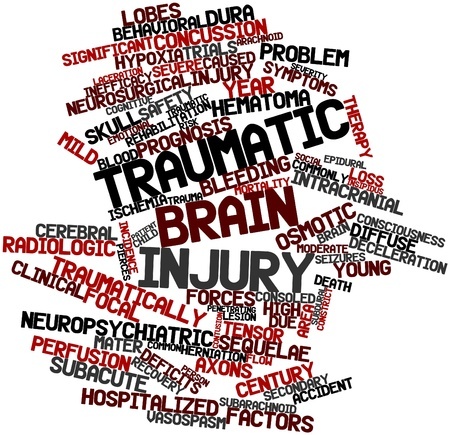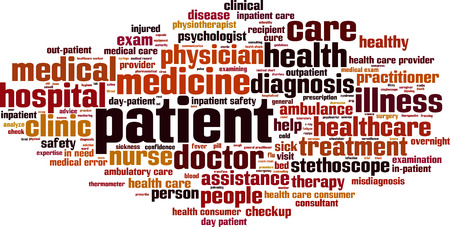

Traumatic Brain Injury Symptoms
Traumatic brain injury sounds scary, and it can be depending on the level of its severity. It is important to note that some people experience signs or symptoms right after a traumatic event, while in other cases, symptoms don’t appear until days or weeks later. The Mayo Clinic has put together a list of physical, sensory, and cognitive symptoms of traumatic brain injuries based on their level of severity.
Traumatic Brain Injury Symptoms by Severity
Mild traumatic brain injury
Read More

Top 10 Shocking Medical Errors
Medical errors are made every day but when you’re sick and need surgery you have to place trust in your physician. The truth is that there are no guarantees; even a great doctor or nurse can have a bad day or make a mistake. It is hard to believe but 250,000 people are killed every year due to medical errors in the United States and millions more are injured. Behind heart disease and cancer, medical errors are the third largest cause of death in the United States.
There are some common medical errors that can lead to big problems and many of them can be prevented with a little effort by the patient.
Top 10 Medical Errors and How to Prevent Them:
1. Treating the Wrong Patient!
This common medical error is caused by staff failing to identify the patient before surgery, often as a result of a different patient with a similar name in the hospital at the same time. Clearly, receiving treatment or surgery for someone else’s medical condition is dangerous. Your best chance of prevention is to make sure that the hospital staff checks your entire name, date of birth and the barcode on your hospital wristband.
2. Leftover Operating Tools!
This surgical error is the stuff of nightmares; the medical staff fails to count or miscounts the pieces of equipment used inside a patient during an operation and literally sew them back up with a piece still inside. If you are having trouble recovering from surgery and have unexplained fever, pain or swelling you may want to ask for an x-ray to rule out equipment left inside.
3. Lost Patients!
This problem is most often associated with patients experiencing dementia. Dementia patients are prone to wandering off and can become trapped or lost and die from dehydration or hypothermia. You can help to protect your loved one by investing in a GPS tracking bracelet.
4. Con-Artist Doctors!
There are people out there posing as doctors when they are not. Being treated by someone not trained as a medical professional is clearly dangerous. Your best defense is to check your physician’s status online.
5. Long Waits in the ER!
We’ve all experienced the overcrowded emergency room and there is a serious risk that a patient will become sicker while they wait for care. If you are concerned about receiving timely care in a busy emergency room then your best offense is to call your doctor and have them contact the hospital on your behalf.
6. Air Bubbles in Blood!
When a patient’s chest isn’t sealed airtight after a chest tube is removed it can leave dangerous air bubbles in the blood. The consequences to this medical error are deadly; air bubbles get sucked into the wound and cut off blood supply to the patient’s lungs, heart, kidneys, and brain. If you are receiving a surgery with a central line tube you then ask how you should be positioned when the line is removed.
7. Operating on the Wrong Body Part!
There are a few things that can cause an operation on the wrong body part including an incorrect notation on a medical chart, a misunderstanding of the medical chart or surgical draping obscuring a mark that is meant to identify the area for surgery. Before you are put under, reaffirm the area in need of surgery with the nurse and doctor.
8. Infections!
The spread of infection can occur pretty easily if doctors and nurses fail to wash their hands or sterilize operating equipment. Patients can die from infections incurred in hospital surgeries so it is worth making sure that nurses and doctors who handle you wash their hands first.
9. Mixed-up Tubes!
A simple visual mix-up between a chest tube and a feeding tube can mean medicine for the chest ends up in the stomach or vice versa. If you have multiple tubes going into your body, ask the nurse to trace each tube back to its origin.
10. Oops. You Woke up During Surgery!
Waking up during surgery is typically a caused by an under-dose of anesthesia. This bizarre situation can lead your brain to be awake while your muscles are frozen; some patients report feeling pokes and prods and some even feel pain. When you are planning for your surgery, make sure that you really need to be put to sleep or if a local anesthetic might work for your case.
Medical malpractice law is complicated and confusing unless you know the law inside and out. Tario & Associates, P.S. focuses on medical malpractice with many years of experience winning claims. Call the expert medical malpractice attorneys at Tario & Associates, P.S. if you or a loved one were injured by the wrong medical diagnosis or treatment. We will hear the specifics of your case and fight for the compensation you deserve. Call us today!
Read More

What is Informed Consent?
Although we may not realize it, we must give informed consent before accepting treatment or a medical procedure. Doctors are obligated to thoroughly inform their patients about the risks involved in a medical treatment or procedure before it is performed. Informed consent is the medical and legal term used to describe this obligation. Without informed consent, a physician is opening himself up to be sued for medical malpractice.
The Ethical guidelines of informed consent are:
1. The person must be mentally competent.
2. All relevant procedural facts must be disclosed.
3. The person must understand the information that is disclosed.
4. The decision to undergo the procedure or treatment must be voluntary.
5. The person must give consent.
What is Informed Consent?
Since most medical procedures involve some risks, the doctor is obligated to communicate these risks to the patient so they can make an informed decision about undergoing the procedure. Essentially, informed consent is the process of providing essential information about a procedure in exchange for the patient’s agreement to receive said treatment. The agreement can be signed as part of the informed consent but it is not complete without verbal communication and a basic understanding by the patient.
Informed consent is one of the key components involved in Medical Malpractice law because the patient may have forgone the procedure had they known the risks.
What Type of Risks Must Be Disclosed?
Although a doctor doesn’t need to tell a prospective patient about every possible small risk, they are obligated to tell them about the big ones. The question is how do you determine which risks are vital to communicate?
Two common standards are used to determine whether the risk should have been communicated.
Some states ask whether other reasonable doctors would have disclosed the risk. In a medical malpractice case this is proven by bringing a medical expert to testify that a competent doctor would have informed the patient of a particular risk because it was statistically likely to happen.
Other states ask whether a normal patient with the same medical history and conditions would have chosen not to receive the procedure had they known about the risk. The court is looking to see if the doctor informed the patient of reasonable alternative treatments before proceeding with the problem treatment. A medical expert is not necessarily called in these cases.
Exceptions to the rule of Informed Consent
In an emergency there is often not time to get informed consent from the patient. A doctor is entitled to make a decision on behalf of the patient to save their life.
If a patient is deemed too emotionally fragile to handle the information about possible risks, a doctor is entitled to be vague in their description. The doctor must be able to clearly state why they withheld information if they are sued for medical malpractice.
Note that if a patient gives informed consent to a heart procedure but during the operation the doctor discovers a different problem, they may go ahead and handle the second problem without informed consent.
Medical malpractice law is complicated and confusing unless you are a malpractice attorney. Tario & Associates, P.S. focuses on medical malpractice with many years of experience winning claims. Call the expert medical malpractice attorneys at Tario & Associates, P.S. if you or a loved one were injured by the wrong medical diagnosis or treatment. We will hear the specifics of your case and fight for the compensation you deserve. Call us today!
Read More

I Was Injured by a Doctor. Who do I Sue for Medical Malpractice?


Hospitals Are Liable for Employee Actions
A hospital can be sued when their employee does not exercise reasonable care when treating a patient or was doing something job related and it results in a patient injury.
Who are Hospital Employees?
In most cases nurses, paramedics and medical technicians are direct hospital employees.
Isn’t the Doctor a Hospital Employee?
Actually, typically doctors are not hospital employees; they are contracted workers and would be sued directly if they committed medical malpractice. One way to know that a doctor is not a hospital employee is that they send a separate bill for their services.
Note that although it creates a gray area, if a hospital employee acts negligently under the guidance of a doctor, the patient could sue the doctor while the hospital remains untouchable.
You can tell if an employee is under a doctor’s supervision because the doctor was present when the employee committed the malpractice and the doctor could have prevented the malpractice by noticing the employee’s error.
When is a Doctor a Hospital Employee?
The doctor’s relationship with the hospital will give clues as to whether he is an employee or an independent contractor. A doctor who is a direct employee would likely have their hours, fees and vacation time set by the hospital.
Is a Hospital ever Responsible for a Non-Employee Doctor’s Negligence?
If you are hitting a dead end, you may wish to retain the services of a medical malpractice attorney to determine if your case warrants an exception. In some cases, a hospital can be held responsible for a non-employee doctor’s actions.
The Doctor Appeared to be a Hospital Employee
Hospitals typically state that doctors are not hospital employees in your admissions paperwork. Once you’ve signed in, you are stating your understanding that the doctor is a contract employee solely responsible for his actions. In the case of emergency rooms visits where paperwork is not signed before care is given, the hospital is often held liable for medical negligence. In a few states, a hospital can be sued for emergency room malpractice regardless of whether the patient understood that the doctor was a contracted employee.
An Incompetent Doctor is Retained
In many states, a hospital can be held liable for medical malpractice if it retains the services of an incompetent doctor. The hospital can also be responsible if they should have known that a doctor has become incompetent, for example, because they have become an alcoholic.
Medical Malpractice law is complicated and varies from state to state. It is advisable to seek legal advice and representation from a medical malpractice attorney in your area. If you or a loved one were injured or died while receiving care at a hospital you may be able to receive damages. If you think you have a legitimate legal claim for your injuries, you should setup an appointment to discuss your case with the experienced medical malpractice lawyers at Tario & Associates, P.S.
Read More

My Infant Sustained a Birth Injury. Do I have a Legal Case for Medical Malpractice?
It is every parent’s worst nightmare: your child is born with a birth defect or experiences a birth injury during delivery. Some birth injuries are caused by negligent actions by a physician or obstetrician before or during birth and can cause permanent disability leading to lifelong care.
In the U.S., it is estimated that 5 out of every 1,000 births incur a birth injury. If the infant was injured in a preventable situation, the child’s parents may be entitled to damages for medical bills, lost wages, loss of future earning capacity, general pain and suffering and emotional distress. If you believe your doctor, hospital or others acted negligently and caused a birthing injury, please contact a medical malpractice attorney today for legal consultation and potential representation.
Birth Injuries vs. Birth Defects
According to the Center for Disease Control, birth defects are the leading cause of infant death and other serious infant health conditions in the United States. It can be very difficult to decipher whether a complication during delivery caused a birth injury or the infant was born with a birth defect. Many birth defects are unavoidable or were caused by other factors such as alcohol or drug use during pregnancy, prescribed medications, or exposure to toxic chemicals. Birth defects can range from minor to life altering. A birth injury is caused during labor and birth; a birth defect was formed before labor. If you believe your infant suffered a birth defect as a result of exposure to toxic chemicals, prescription medication or another external factor, you may be entitled to compensation. Please contact a personal injury attorney today for full legal consultation.
Do You Have a Legal Claim against a Birthing Injury?
If your physician used mechanical forces such as stretching, pulling or pressure during delivery, there is a possibility that your baby’s oxygen supply was cut off and caused brain damage. Your physician may also be liable for damages for not taking appropriate actions to monitor, diagnose, assess or otherwise respond to symptoms or conditions presented during your pregnancy or labor thus contributing to a birth injury.
Common Types of Birth Injuries
A Brachial Plexus (Erb’s Palsy)
A Brachial Plexus injury is paralysis of the arm due to damage of the upper group of the arm’s main nerves, the C5-C6. This damage is commonly caused by a side-pulling of the infant’s neck or head while the shoulders pass through the birth canal during an abnormal or difficult childbirth or labor. The condition can also be caused by aggressive pulling on the shoulders during a head-first delivery or by pressure on the raised arms during a breech (feet first) delivery.
Cortical Blindness
Cortical Blindness is the total or partial loss of vision in an otherwise normal-looking eye caused by damage to the brain’s occipital cortex. The most common cause of cortical blindness is ischemia (oxygen deprivation) to the occipital lobes sometimes caused by birth injuries.
Cerebral Palsy
Cerebral Palsy is a condition characterized by, but not limited to, abnormal muscle tone and/or coordination, impaired motor function, speech disorders, epilepsy, seizures and learning disorders or disabilities which may be caused by birth trauma.
In order to successfully acquire birthing injury related damages from your doctor, hospital or other medical staff, you will need to prove their negligence. A medical malpractice attorney is there to help you prove your case, starting with the particulars of your circumstance and consulting other medical experts who will show what level of care is considered reasonable and how the birth injury could have been avoided. If you have been affected by a birth injury, protect your rights.
Consult with a birth injury attorney with experience and success in both medical malpractice and birth injury claims at Tario & Associates, P.S today.
Read More